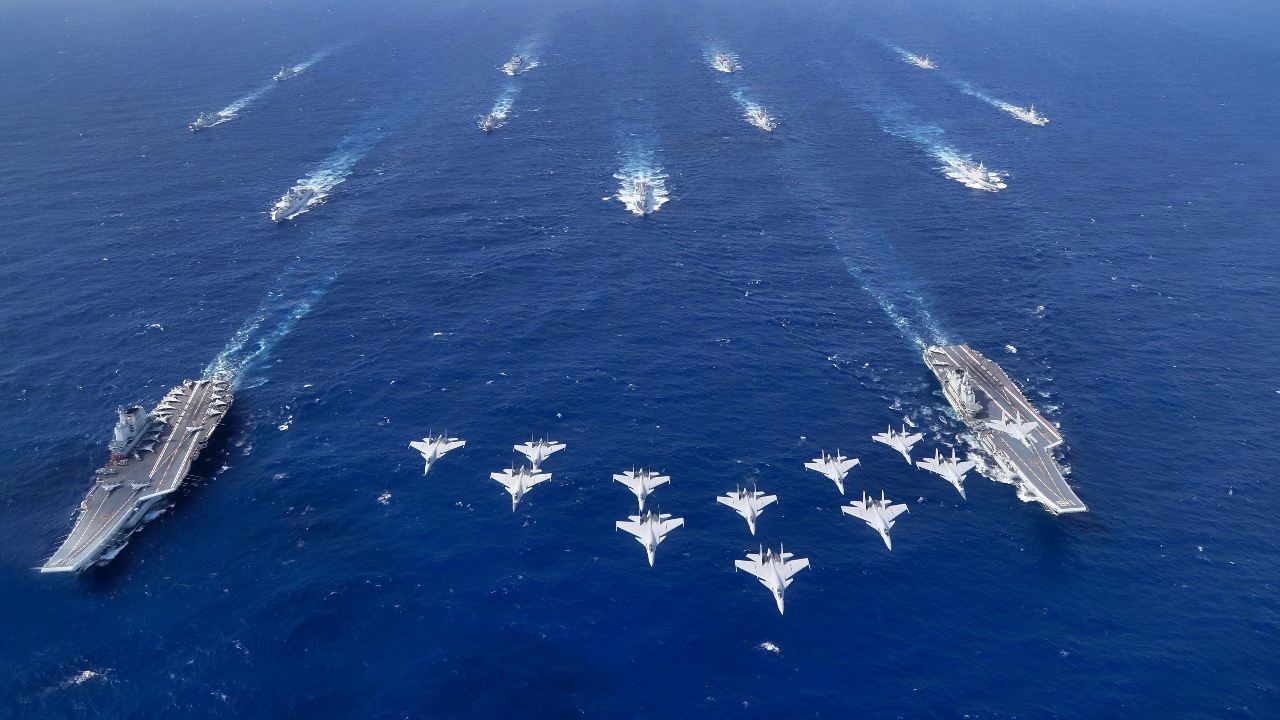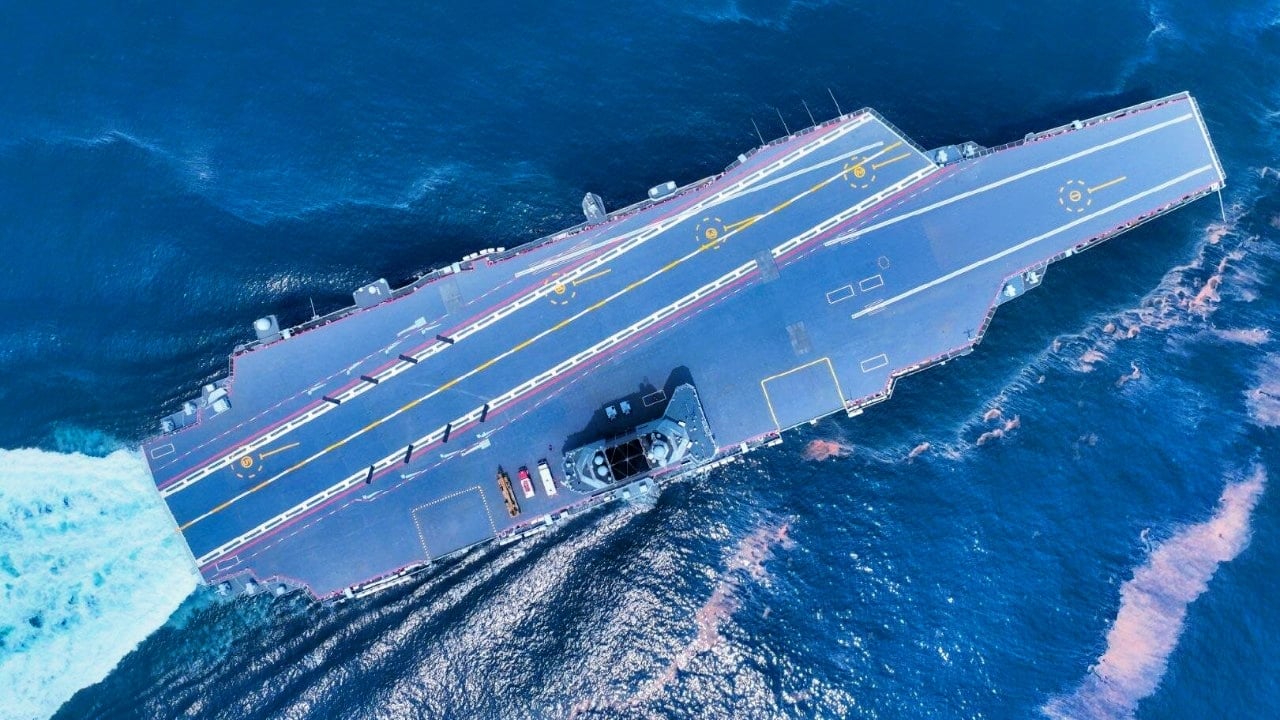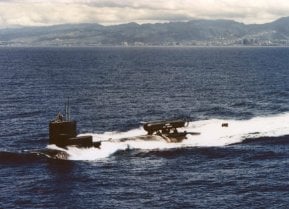The Great China Aircraft Carrier Fake Out
China’s aircraft carriers play a secondary role within the People's Liberation Army Navy (PLAN), supporting the nation’s anti-access/area-denial (A2/AD) strategy rather than serving as the fleet’s centerpiece.
What You Need to Know: China’s aircraft carriers play a secondary role within the People's Liberation Army Navy (PLAN), supporting the nation’s anti-access/area-denial (A2/AD) strategy rather than serving as the fleet’s centerpiece.

-While the U.S. Navy relies heavily on carriers for global power projection, China’s defense centers on extensive A2/AD networks in the South China Sea, capable of keeping American forces at bay and deterring intervention in a Taiwan conflict.
-These A2/AD systems, featuring anti-ship ballistic and hypersonic missiles, create a protective bubble over Chinese forces, rendering China’s carriers a support asset, strategically positioned closer to home and more replaceable than their U.S. counterparts.
China’s Aircraft Carriers are NOT the Center of Their Fleet
There continues to be a grave misconception about the importance of aircraft carriers in the overall force posture of China’s People’s Liberation Army Navy (PLAN) surface warfare fleet. For American observers, the aircraft carrier is the penultimate naval power projection platform.
Western think tank types cannot fathom a fleet, one that wants to be taken seriously at least, wherein the carrier is not the centerpiece of all activity.
But that is precisely the case for China, a nation that very much wants to, and very well should, be taken seriously as a real challenger to the United States.

China currently has three aircraft carriers with a fourth on the way. The first carrier, the Liaoning, is quite unimpressive, even with all the modifications the advanced Chinese installed on the ship.
It’s a hand-me-down from the old Soviet Union.
China Showcases Their Capabilities Against Taiwan
Subsequent Chinese carriers, however, are indigenously built and they incorporate some of the most advanced systems imaginable. Indeed, China’s Shandong aircraft carrier has a new system installed that makes it nearly impossible for rival nations to track their massive carriers while at sea, or to use wake-homing torpedoes to attack the Shandong.
This is just one of many features the innovative Chinese military has gleaned from years of perfecting their tracking capabilities of large U.S. Navy warships, notably American carriers. Just last week the Chinese completed a massive wargame off the coast of the beleaguered democracy of Taiwan, which China covets.
In that wargame, for the first time, all of China’s operational carriers conducted joint operations. It was a signal to the Americans and the region that China was truly the most dominant regional actor.
Of course, Japanese carriers remain technically more advanced than China’s, although that is set to change very soon.
More importantly, the Chinese defense industrial base, their mighty shipyards, are upstaging the Americans, once considered the “arsenal of democracy.” One Chinese admiral reportedly boasted to Western media that, unlike the American shipyards, there were “no bottlenecks” in the production line for China’s new and increasingly advanced carrier force.
In other words, the fleet that the Americans have is static whereas China’s fleet is growing, and its industrial base is robust enough that it can far more easily replace any lost units or repair them at a greater rate than the Americans.

This is a decisive advantage, when one considers the high degree of probability that the United States and China will be in a shooting war likely over the fate of Taiwan soon.
Aircraft Carriers are not the Primary Power Projection Platform for China’s Navy.
However, the primary role that carriers play in the overall strategic disposition of China’s navy is not the same as the role that America’s massive nuclear-powered carriers play in its expeditionary fleet.
Instead, the Chinese carriers, while sophisticated, are merely support ships tailored to further China’s strategic goal of taking Taiwan.
Interestingly, in this author’s assessment, the centerpiece of China’s maritime power is the advanced anti-access/area-denial (A2/AD) systems that Beijing has spent the better part of a decade developing, and deploying, throughout the South China Sea (SCS) and along their coastline.
These A2/AD networks will be essential for China’s military in keeping the bulk of America’s military over the horizon in any war over Taiwan. The A2/AD threat includes massive numbers of long-range anti-ship ballistic missiles, even hypersonic weapons that can track and destroy U.S. carriers, these are known as “Carrier Killers”.
All these systems mean that the Pentagon will be hard-pressed to risk their massively expensive aircraft carriers, especially if the probability exists that those carriers will not even be within effective combat range of Chinese forces before they could be crippled or killed by China’s A2/AD systems.
The Carriers are Ancillary to China’s A2/AD Network
China’s carriers are meant to operate within the protective bubbles that their A2/AD networks will create over whatever area of operation Beijing has assigned, again, likely Taiwan. What’s more, China’s carriers are far more replaceable than the American ones.
While still technically superior to China’s, the American carriers will have to contend with far greater threats to its safe operation than will the Chinese carriers, which will be operating beneath the protective shield of those A2/AD networks and be operating much closer to their home territory than will the Americans.
So, the next time you read a think tanker in Washington lambasting China’s carrier force when compared to that of America, remember that it is likely coming from a place of profound ignorance, and mirror-imaging, the bane of all analysts.
About the Author
Brandon J. Weichert, a National Interest national security analyst, is a former Congressional staffer and geopolitical analyst who is a contributor at The Washington Times, the Asia Times, and The-Pipeline. He is the author of Winning Space: How America Remains a Superpower, Biohacked: China’s Race to Control Life, and The Shadow War: Iran’s Quest for Supremacy. His next book, A Disaster of Our Own Making: How the West Lost Ukraine, is available for purchase wherever books are sold. Weichert can be followed via Twitter @WeTheBrandon.
Image Credit: Creative Commons and/or Shutterstock.


